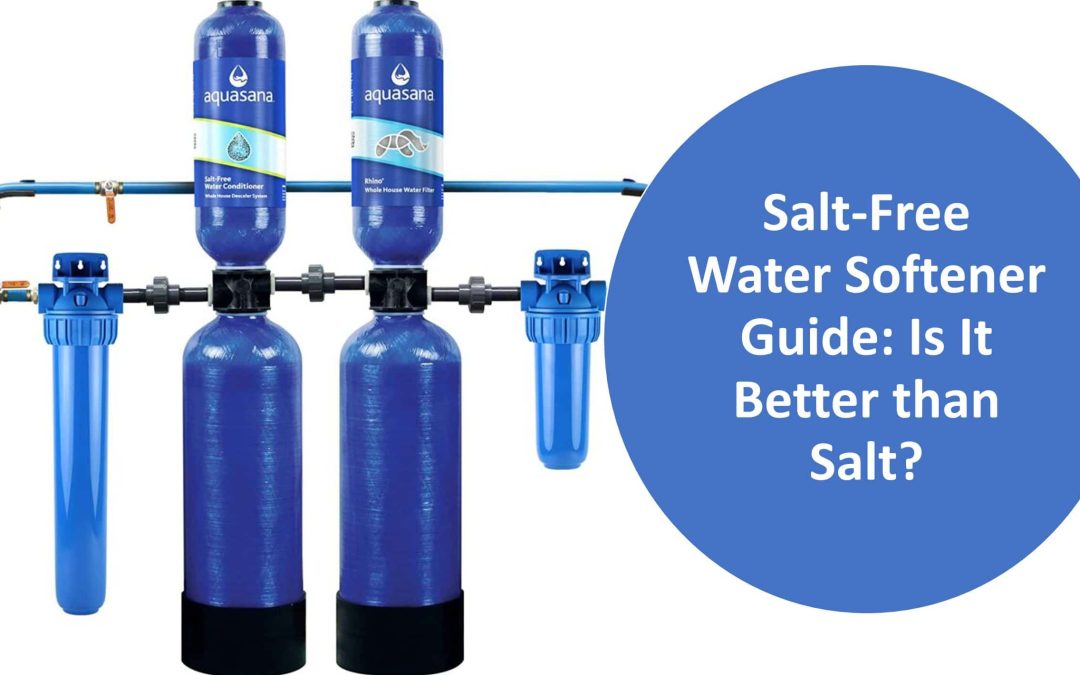This article discusses the pros and cons of each type, including how long they last and whether or not they add salt to the water. It also explains why you may want to consider a saltless system if you’re concerned about the environmental impact of salt.
Which is better, salt-free or salt water softener?
If you are looking for a water softener, you have probably seen some confusing information about the different types on the market. For instance, some say salt-free water softeners are better because they do not add sodium to your daily diet. However, salt-free water softeners are less efficient and require less maintenance than their salt-based counterparts. This article will provide you with information about both types.
The best part about these systems is that they remove more than just hardness particles. They condition the water not to scale and damage your plumbing. In addition, they remove other contaminants like pesticides, herbicides, and bacteria. However, the downside of salt-free systems is their high price tag. Salt-free systems generally last between six months and a year. You should consider a full-filtration system if you want a salt-free solution for your water-softening needs. You can also save money by installing your unit. And if you’re handy with plumbing, you can install the system yourself. If not, call a professional to do it for you.
There are several advantages and disadvantages to both salt-free and salt-based water softeners. Both methods work to remove minerals from water. If you have a salt-free softener, you can avoid the hassle of changing the salt and will not have to worry about wasting water. Salt-free softeners are also more affordable and maintenance-free than their salt-based counterparts.
Are salt-based water softeners effective?
Water conditioners and softeners remove minerals in the water through a process called crystallization. The heavy minerals in water attach to neutralization sites and become crystals. These crystals detach from the surfaces and prevent scale and mineral buildup. Saltless water softeners have the benefit of a longer life expectancy. However, they may struggle in areas with high water use and extremely hard water. These are just a few questions you should ask before deciding on a water treatment system for your home.
While saltless water systems use less salt per gallon, they require electricity and the replacement of softening media. They are becoming a fading phenomenon in many farming communities because of their high sodium content. Salt-free systems are healthier and more environmentally friendly. Some communities are banning the use of salt-based water softeners. Culligan has also opposed salt-based water softeners. Many salt-based water softener dealers have been suing local governments over banning them.
Saltless water softeners should be chosen according to their maximum water flow rate. The capacity of a salt-free softener depends on the size of your household. Larger households need a higher flow rate than smaller ones. Salt-based water softeners require periodic regeneration of salt. A metered or timed system can be used to regulate water flow rates. The average household uses eight to 12 gallons of water per minute, so a small unit should be sufficient for most households.
Why is a no-salt system better?
The two primary differences between a salt-based and a no-salt water softening system are their efficiency and cost. A salt-free system does not add salt to your water, avoiding the risk of dumping it into the environment. While both types of systems can effectively combat the effects of hard water, a salt-free system is more economical and may be better for the environment. However, you need to know that a salt-free system is not as efficient as a salt-based system.
Besides their cost, salt-based water conditioning systems require routine maintenance and regular salt replenishment. These systems are generally more expensive than their no-salt counterparts, which range from $500 to $3,000 each. The downside to saltless systems is that they do not work as well in areas where the water sits, causing limescale to build up. But, if the price of salt-based water softening systems is not a concern, no-salt systems can be a great option for your home or business.
No salt water softening systems are better for homes with water hardness levels under 80 grains per gallon. If you are on a low-sodium diet, you might avoid using salt-based systems, as they add 7.5 milligrams of sodium per quart of water. Additionally, salt-based water softeners require electricity to operate, which is an environmental concern.
How long do salt-free water conditioners last?
When you buy a salt-free water conditioner, you’ll be happy to hear that they require little maintenance and can last for years. These systems consist of only a single tank and a cartridge and require no drain connections, storage of brine, or potassium. They are also unlikely to impact the water flow rate dramatically. You’ll probably want to replace your media once every three to five years.
Before purchasing a salt-free water conditioner, consider the amount of water your home uses. While a single-person household may not need a large water supply, a family with several children will need a large one. The water flow rate you need is critical, and a salt-free water conditioner built to filter large volumes of water will have an easy time maintaining this flow.
A salt-free water conditioner crystallizes calcium and magnesium minerals in your water. This causes these minerals to leave the water and form scale. Traditional water softeners remove hardness minerals by using ion exchange. To do this, they charge tiny plastic beads with sodium ions, attracting the calcium and magnesium ions that cause scale build-up. A salt-free water conditioner will be useless if you have a well with moderate levels of calcium and magnesium.
Are salt-free water softeners safe?
Salt-free water softeners are a great solution for homes with low hardness levels. However, you should know that they are only effective if the hardness level is under 80 grains per gallon. It would be best to determine how much water your household uses daily, as long showers and dishwashers can use a lot of water. A salt-free softener should be able to handle a flow rate of between one and five GPG.
Salt-based water softeners replace calcium and magnesium with sodium. While sodium-based softeners are often necessary for industrial buildings, office water fountains, or other high-end appliances, salt-free softeners are more environmentally friendly for everyday use. Some salt-free water softeners use potassium chloride, which is 99.9% salt-free but is costly and difficult to find. If you want to use a salt-based softener, look for an evaporated-salt water softener.
Salt-free water softeners do not require regular maintenance, although some systems may benefit from cleaning once or twice a year. You can also use the system for years without replacing the media. Just make sure to follow the manufacturer’s cleaning instructions. This may mean changing the water softener every five to ten years. It is best to consult with a professional if you are not sure of the safest salt-free softeners for your home.
How much does a salt-free water softener cost?
A salt water softener is a great way to reduce the number of minerals in your water. They typically need 40 to 80 pounds of salt to operate. It would be best if you also remembered that saltwater softeners require an electrical connection. This is necessary to power the process that removes impurities from the water. The cost of saltwater softeners depends on the type of salt used and the size of the unit.
Regular water softeners require regular maintenance such as salt replenishment and flushing out the brine. A saltless water softener does not require these activities and conditions water without salt input. In addition, the cost of a saltless softener is lower than that of a salt-based one. A salt-free softener is also simpler to install than a salt-based one, and most homeowners can do it themselves.
When purchasing a saltless water softener, keep in mind the size of your home. For example, a one-person household would need a four-gallon-per-minute (GPM) unit, while a family of four would need seven to ten GPM. To ensure that your saltless water softener lasts for years, look for one with a ten-year warranty.
Is there an alternative to a water softener?
If you’re looking for a solution to your hard water problem but have found that a water softener is too expensive, there are many alternatives. Electrochemical water treatment uses an ion exchange process to convert calcium, magnesium, and other minerals in the water into microscopic crystals that won’t build up as surface scale. This process is expensive upfront, but will save you money over time.
The most popular and widely-used method of treating hard water is the installation of a water softener. These devices are known as ion exchange water softeners. These devices use highly developed technology to reduce water’s hardness. However, water softeners can cause problems in some cases. Many people do not want to waste money, and the technology used in these units can produce wastewater that is harmful to the environment.
Electric magnetic water softeners use magnets and electromagnetic devices to turn the water particles into crystals that will not adhere to one another, preventing clogs and scaling in pipes. Because they are plug-and-play devices, they require no electricity or plumbing. However, you must have a minimum of 10 inches of pipe space. A water softener is most effective if the pipe diameter is at least an inch. If you need to buy one, the price will be higher.
Conclusion
While a salt-free water softener system is ineffective compared to a salt-based one, there is no reason to believe it is dangerous. Salt-free water softeners is a salt-based process above (true water softening), hardness minerals are removed from the water. Once you’ve installed your salt-free water softener, the only maintenance involved is changing the sediment filter once a year. Water softeners make use of a process called ion exchange.



